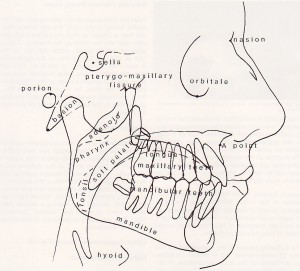Best Orthodontic Marketing Ideas
As an orthodontist, one of the most daunting tasks can be dealing with how to market your practice. As budgets are crunched and outsourced help can be a strain, many practices are coming up with their own marketing ideas and initiatives to attain new patients.
While the thought of the task of marketing your practice may be scary to you, it’s not really something to be afraid of. You know inevitably it must be done, and it’s better to get it done seamlessly and with great results. So instead of becoming overwhelmed and letting the thought of marketing drive you stir crazy, follow these easy ideas to implement simple marketing strategy into your orthodontic practice.
Find all the local dentists in town and offer them something, just because!
Above all, humans like to receive. It is innate to our being that when we receive something we feel the need to reciprocate this action by giving back. As an orthodontist looking for new clientele take advantage of this tactic of persuasion! Reach out to other dentists in the area and offer them lunch or even a cup of coffee. You’ll be amazed the difference it makes when you engage with them one on one, especially when it comes to which orthodontist they’ll refer their patients to.
It can be dentistry/orthodontics related such as a free consultation/ records appointment, or a tour of your labs or something as naive as wishing them a happy birthday with cake and a personal card. In this case the point is to make a personal gesture that the dentist will remember you by. Try and leave them wishing there was some way they could repay you for your kind gesture.
Comp Cards
Using the same principle of receiving, we as orthodontists can use comp cards to give a little and receive a lot. Another part of our innate humanism is our strive for commitment. By offering first time patients a free consultation or a free gift from your practice, they feel not only as if they want to reciprocate by giving you their business but also that they have to keep consistent with their first appointment.
These comp cards can be delivered to patients that haven’t been active in awhile, a new patients waiting list, referral list, etc. By offering them a reason to come into the practice you’ve already gotten your fit in the door, and getting them to commit is the easy part.
Referral Reward Program
The greatest form of marketing these days can’t even be performed by the practice itself. Instead, patients are most keen to hear reviews and good word of mouth sentiment from their fellow friends and colleagues. According to a research by Nielsen, 92% of people trust a recommendation from a friend or family member more than typical marketing messages.
Don’t be shy, ask your patients to tell their friends and family about their experiences at your practice. Particularly orthodontists are a sensitive place for many first time patients, they want to make sure they’re being seen by someone they can trust. Encourage your current patients to spread the word by rewarding them with gift card or other small gifts to show your appreciation. This is a win-win for both you and the patient bringing in new business and making your current patients feel valued.
Patient’s Day
Another way to show your patients how much you appreciate them and their value amongst your practice is by taking a day every year to honor them. As a patient it’s a fun way to get to know others in similar situations and just have a good time together. Some ideas could be closing down the practice for the day and showing a movie on the projector, providing healthy snacks of course. Or taking the patients to a bowling alley or sporting event. Not only will you get to know your patients better in a more intimate setting, but it’s also a great way to get other potential business through word of mouth.
These are just four easy ways you can begin the marketing process for your orthodontic practice. You can easily implement these into your strategy with little to no budget, because even the smallest gestures like wishing someone a happy birthday can have a big effect on your patients. Other innovative technologies you implement in your practice i.e. CephX’s cloud based ceph tracing system makes your practice that much more marketable and more attractive to future patients.






